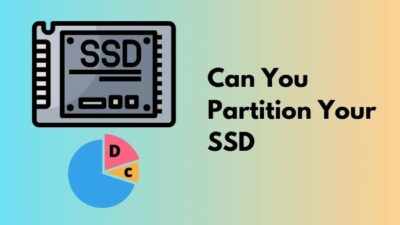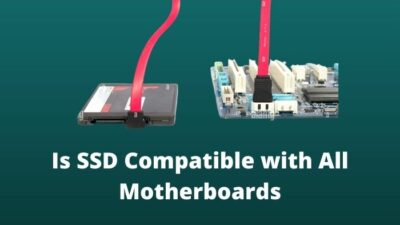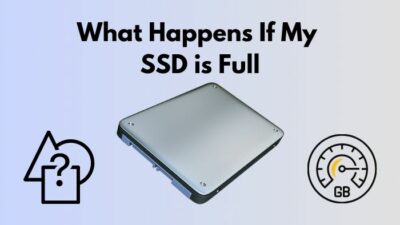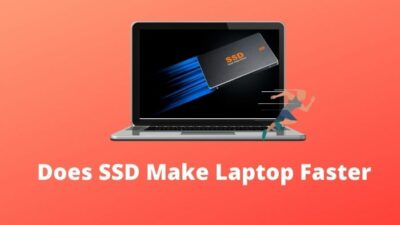SSDs are meant to boost up system speed and launch applications using minimal time.
Though it gets filled with junk files and constant system upgrades, it can be annoying to get the message Your disk is full,whereas you didn’t use that much space.
So, why SSD keeps filling up?
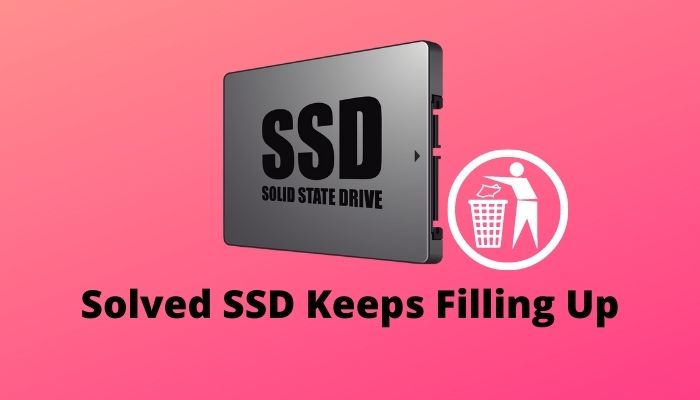
In this article, I’m about to show you how you can quickly deal with this storage related problem by leveraging the skills you already have.
Sounds a lot to check? Let’s fix it.
Why Does My SSD Keep Filling Up So Fast?
Did you know that SSD only needs 10% free space from its total to work at full capacity?
Feels good to hear that, right? But, if your SSD has more than 90% of the total filled, you need to find out why this is happening.
A solid state drive has a few reasons behind having a full disk space.
Here are the reasons your SSD is filling up so fast:
- Hidden Data Occupying Disc Space: When this occurs, storage status gets full without even saving data to the disk space. That’s because hidden files and folders make the disk space unserviceable. If your system shows that SSD is full even though you haven’t stored anything, then there are some hidden files and folders which you need to find out.
- Malware and Virus Invasion: This is a common reason behind the storage problem you are having. The virus infects your firmware, and it shows you have used most of your space.
- Corrupted Software: Some software gets corrupted and occupies your disk space by generating piles of log files.
- Restored System Files: Windows regularly creates backup files to protect your data and files. If you lose some data, the system restores helios you to get that data back. This process takes a lot of space without notifying you, hence the shortage of space.
- Unnecessary Programs: Now and again, you mess up your computer with many programs that you may never use. These programs create a disordered load in your system and make your SSD fill up so fast.
- Offline Files: Programs like OneDrive generate offline files that take up lots of space to sync your data and files.
These are the main reasons behind your SSD getting filled up. Find out whichever is working in your system.
Since I pointed out the cause, I will explain how you can solve it. So, bear with me if you want to get rid off of this issue.
Follow our guide to fixing Can SSD Overheat.
How to Solve SSD Getting Filled Up so Fast
In the previous section, I explained the ways your SSD space is decreasing.
The major problem you can notice is the slow system. With a slow system, your computer might hang for a bit, and to add more, some programs may not work properly.
Scary, right? So, Do you want to know how you can solve this issue? Follow the methods I’m going to show you next.
Do check our latest post on the is SSD Portable.
If the storage issue occurs for hidden files and folders, you can delete it without any doubt. Observe the hidden files closely. If you find anything suspicious or any big data you’re not aware of then, have it deleted by following these steps.
- Open Windows Control panel
- Select File explorer options.
- Navigate to the View tab on that window.
- Tick the option of show hidden files, Under hidden files and folders section.
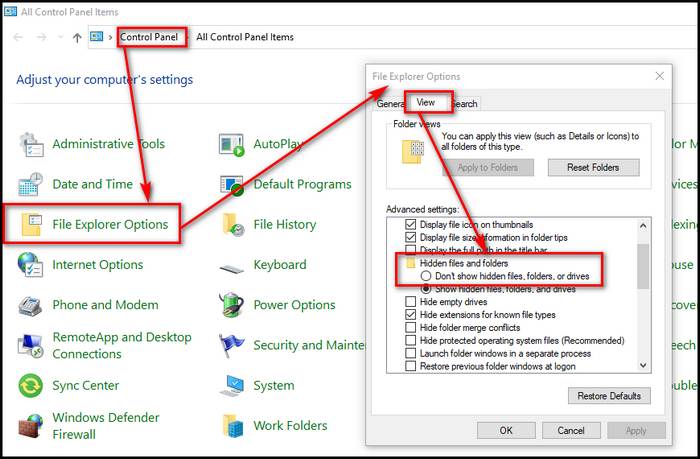
- Click Apply then ok to confirm
Look at the hidden files and delete unwanted big files. Clear the recycle bin for proper deletion.
Check out our expert-recommended Can SSD Improve FPS.
Method 2: Disable System Restore
System restore files are necessary if there’s any chance of losing data. But it’s not more important than your disk space. By disabling System Restore, you can save huge space.
Here’s how you can do that:
- Right click on This PC and click on Properties from the list.
- Select System Protection from the next window that appears.
- Select Configure from the right side of that window.
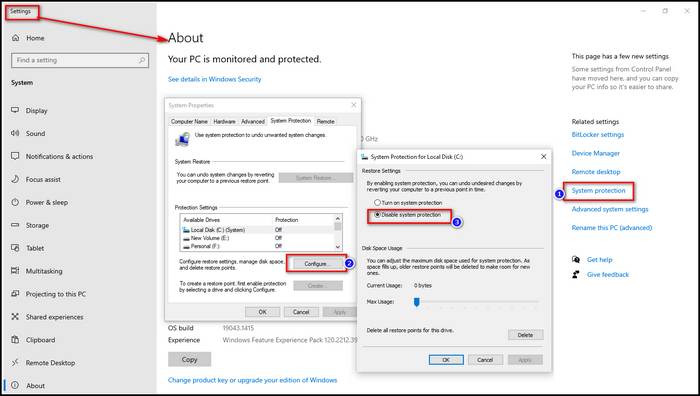
- Find Disk Space Usage and move the slider ( bottom of the page) to decide how much space the system restore process can take up.
- Turn off the system protection and apply the changes.
Check if the SSD has some free space available now.
Method 3: Uninstall Programs
Programs that you don’t use ever causes storage problem. If you uninstall them, you can save a lot of space.
Here’s how you can uninstall a program:
- Go to Control panel and select Programs.
- Click on the unnecessary program using your SSD space.
- Select Uninstall and Ok to confirm the process.
After completing the process, make sure you have deleted the cache files of the program.
Method 4: Delete Hibernate file
This is the type of file created by the operating system when the computer goes into hibernation mode. If your SSD hasn’t much space available, you can disable them by performing these actions.
- Go to the start menu and type cmd.
- Right click on Command Prompt and select Run as administrator.
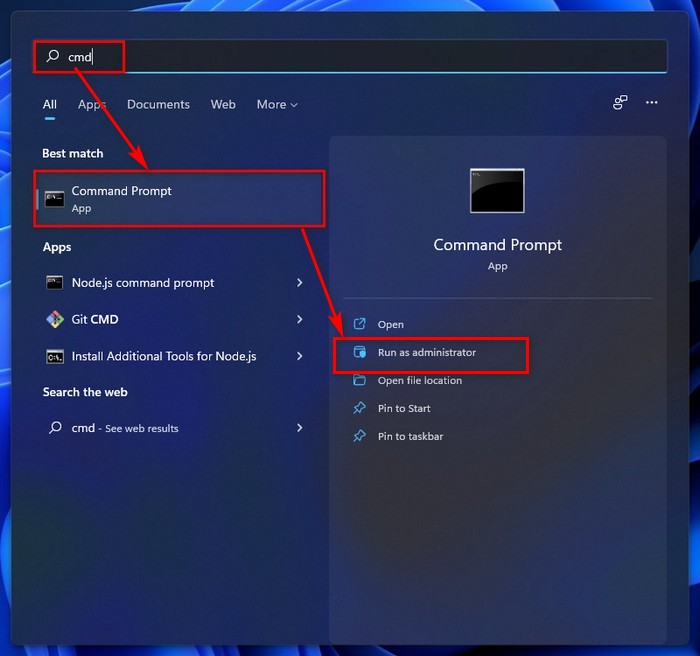
- Copy this command “powercfg -h off”.
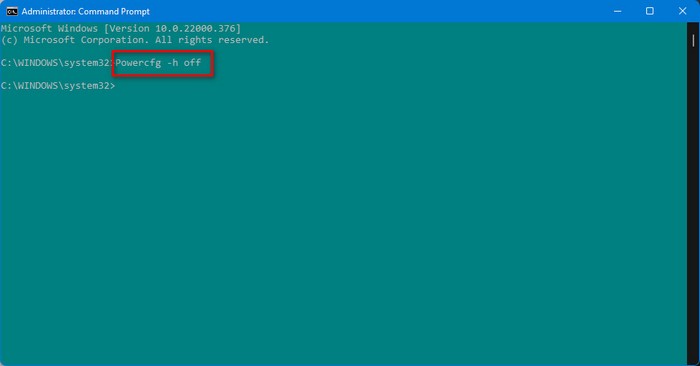
- Paste it in your Command prompt.
- Press Enter to activate.
After that, windows will disable the hibernation, and your SSD might get some free space back.
Method 5: Delete Previous Windows Files
If you are using a newer version of windows, then the previous version shouldn’t exist on your computer. Right? They actually do, And you don’t know that?
Older windows files exist in your system even though you don’t keep previous files during windows installation.
Here’s how you can remove them:
- Search Disk Cleanup in the windows search field.
- Select the drive you want to clear.
- Click on Clean up system files. Windows will start scanning for files.
- Find Previous windows installations from the list.
- Tick on the box right next to it.
- Click ok to activate the cleanup.
After that, you’ll see much free space on your SSD.
But before that, go through our epic guide on Can SSD Cause Blue Screen.
Method 6: Run virus test
I explained earlier how malware and virus invasion can affect your disk space. It is advisable to install an antivirus in your system so that your PC gets the protection it needs and your SSD maintains proper function.
If you have disabled windows protection shield, enable it by following these easy steps:
- Search for Security in the windows start menu.
- Select the Virus & threat protection from the menu bar.
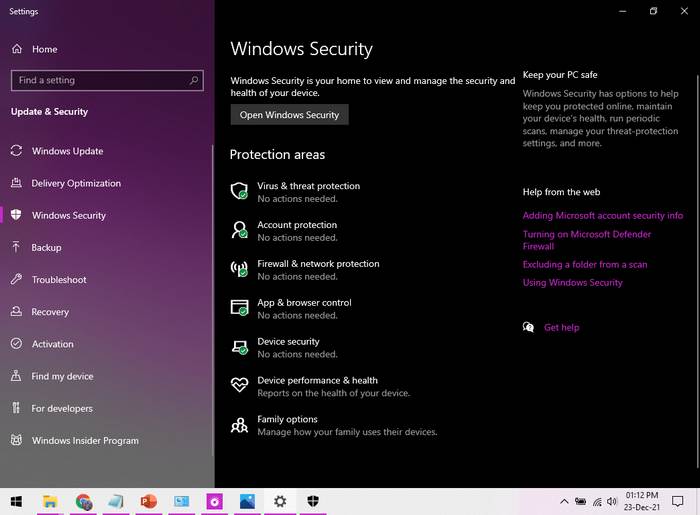
- Switch the Real time protection switch to on.
After that, perform a quick scan and eliminate the threat files from your computer. Or you can use any antivirus software you prefer. My suggestion is never to leave your computer unprotected.
These are the fixes that work perfectly for Windows 10, 8.1, and Windows 8 users. If you are using the latest Windows version, read the next method, as it will be more suitable for your computer.
Go through our epic guide on Fix Motherboard Can’t Detect Hard Drive.
How To Free Up Space on SSD (Windows 11)
Solving the SSD storage issue in windows 11 is much more effective than the previously available versions. All you need to do is clean up the junk files and move installed apps from the critical drive.
Here’s what you can do to fix that:
- Press windows+R keys together.
- Type cleanmgr and press Enter.
- Select the drive you want to clean up.
- Tick on the box in front of the files you want to delete first.
- Confirm the deletion when the next window appears.
Repeat this process if you need another drive to clean up.
These easy steps are enough to recover the disk space. You can use any kind of cleaner utility to keep the junk files away from your SSD.
Conclusion
These are the tested and proven methods you can apply if your SSD keeps getting filled. My recommendation will be to apply these methods one by one. No one knows which will be suitable for you. Perform every action and check if that solves your matter.
If you face any problem implementing them, feel free to comment.

